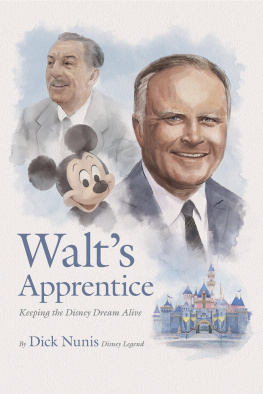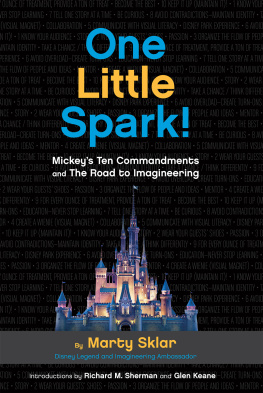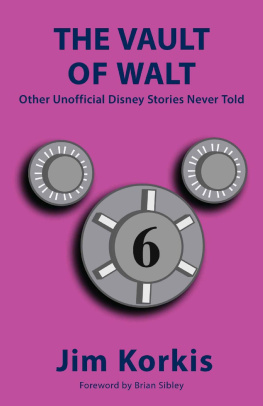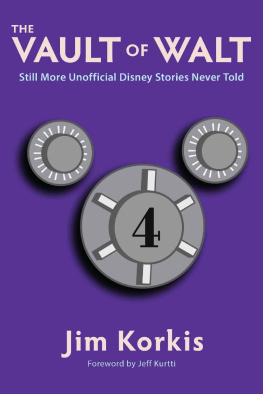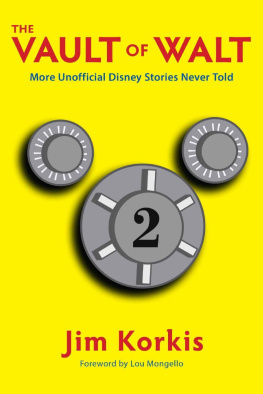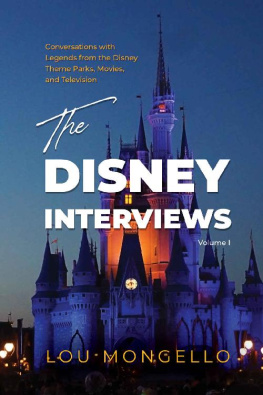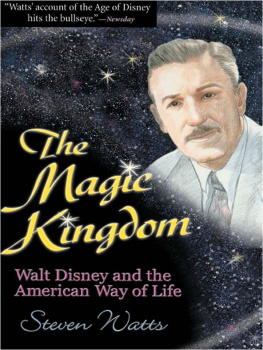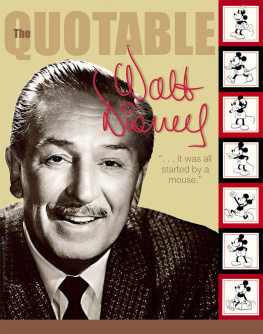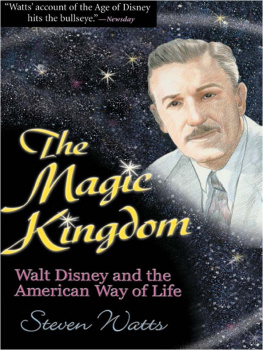From Horizons to Space Mountain
The Life of a Disney Imagineer
George McGinnis
Foreword by Bob Gurr
(Retired) Disney Imagineer
THEME PARK PRESS
www.ThemeParkPress.com
2016 George McGinnis
All rights reserved. Except as permitted under the United States Copyright Act of 1976, no part of this publication may be reproduced or distributed in any form or by any means, or stored in a database or retrieval system, without prior written permission of the publisher.
Although every precaution has been taken to verify the accuracy of the information contained herein, no responsibility is assumed for any errors or omissions, and no liability is assumed for damages that may result from the use of this information.
Theme Park Press is not associated with the Walt Disney Company.
The views expressed in this book are those of the author alone, and do not necessarily reflect those of Theme Park Press.
Theme Park Press publishes its books in a variety of print and electronic formats. Some content that appears in one format may not appear in another.
Editor: Bob McLain
Layout: Artisanal Text
Theme Park Press | www.ThemeParkPress.com
Address queries to bob@themeparkpress.com
Contents
Foreword
George McGinnis. Let me tell you about George. I never met a designer who exasperated me as much as George. What I did not realize until decades later was that what set my hair on fire at the time was the very characteristic George had that made him probably Walt Disney Imagineerings finest industrial designer of all time.
No person I ever worked with stuck to his guns over getting every last detail completely correct, staying true to the design requests given to him. Hed show me every single detail and explain why it was so important. As the manufacturing design guy for his projects, I was ready to roll forward while he was continuing to refine his designs. His main boss, Dick Irvine, would exclaim,George, youre glossing the goose!
An example. The WDW 20,000 Leagues submarine was patterned after the dramatic and fantastical Jules Verne-style submarine. George was going to make sure his submarine would truly reflect the Verne concept. Its just a ride vehicle to me, but not to George! He added a most elegant brass helm and fancy wheel, totally unneeded on a ride. Irvine said no, and I grabbed the parts and confiscated them to my home. I still have them today my personal monument to Georges unyielding honor to just do it right.
And doing it right is what George unfailingly pursued during his entire career with Disney, his work on Rick Carusos trolleys and beyond. When I visit Glendales Americana today, I still stop to admire Georges fantastical, beautiful (and correct) trolley, another wonderful monument to his superb design integrity.
Georges autobiography will be a joy to everyone who values authentic design. He shares tales and detailsall in the most thorough mannerthrough his revealing text and illustrations. And to those who wish to pursue Imagineering, in fact, any significant creative career, this is your guiding treasure.
Bob Gurr
(Retired) Disney Imagineer
Introduction
Industrial designer George McGinnis began his career at Walt Disney Imagineering in 1966. His senior project at the Art Center College of Design, a working model of a futuristic high-speed train, attracted the attention of Walt Disney. George was invited to Imagineering by Walt, who showed him the WEDway PeopleMover system in development. Walt proceeded to introduce George to Dick Irvine, President of Imagineering, who invited George to become an Imagineer.
Georges first assignment was to design miniature transportation models for the Progress City display for the Carousel of Progress attraction that opened at Disneyland in July 1967. He was also responsible for concept design of both the Mighty Microscope for the Disneyland attraction Adventure Through Inner Space and the Saturn-style winged rocket with boosters for Disneylands Tomorrowland Rocket Jets (1967). From 1967 to 1971, George designed WEDway PeopleMover trains and parking lot shuttle vehicles for Walt Disney World. In 1971, he became a show designer, involved with such major projects as Space Mountain for both Walt Disney World (1975) and Disneyland (1977). A year later, in 1978, he worked on the concept designs for the robots in Disneys The Black Hole motion picture.
In 1979, George became manager of Industrial Design for Epcot and later project show designer for the Horizons Pavilion. In addition, he also designed SMRT-1 and the Astuter Computer Revue for the Communicore Pavilion. From 1983 to 1987, George designed the Mark V monorail train for Disneyland, which debuted in 1987. Following that, George contributed design ideas for the Magic Kingdom attraction Delta Dreamflight/Take Flight, designed the Walt Disney World Mark VI monorail, and designed tram vehicles for the Disney-MGM Studios Backlot Tour.
Between 1990 and 1995, George brought his skills as a show designer to several projects for Disney theme parks around the world: boat vehicles for Splash Mountain at Tokyo Disneyland and the Magic Kingdom, Indiana Jones Adventure ride vehicles for Disneyland, the Space Mountain ride vehicle concept for Disneyland Paris, river boats, safari vehicles, and a steam locomotive and cars for Disneys Animal Kingdom at Walt Disney World. Since retiring from Imagineering in 1995, George has continued to work for Disney as a consultant on the Rocket Rod concept vehicle for Tomorrowland, river rafts for Animal Kingdom, and California Adventure.
In addition to his post-retirement work for Disney, George designed trolley cars for real estate developer Rick Caruso. Both trolleys are popular attractions at The Grove and the Americana, two of Carusos upscale residential/shopping communities in California.
An Imagineers Story
Birth of an Imagineer
The year was 1929 and the Great Depression was about to rock the financial world. On November 19, one month after the stock market collapse, my parents welcomed into their family the fifth of what would be six children. That child was me. I was the youngest of four boys and an older sister. A younger sister would be born three years later. I was baptized at the First Presbyterian Church of Greenville, in Pennsylvania, which our family attended regularly.
My mother, Isabel Campbell, was born on a crofters farm on the outskirts of Wick in the far north of Scotland. As a young girl she knew well the streets of this small seaport town. Every Sunday her family would pack a lunch and travel by horse and wagon five miles into Wick for church.
After a brief job in Ireland as a nanny, my mother realized that there was no future for her on the farm, so in 1913 she and her sister Margaret moved to Toronto where an uncle lived. After completing nurses training, my mother moved to New York and a job at the Womans Hospital. Being a thrifty Scot, she used to volunteer as an usher at Carnegie Hall in order to hear the concerts.
My father, James Reed McGinnis (everybody called him Reed), grew up in Sandy Lake in western Pennsylvania near Greenville, where he worked in the drafting room at the Bessemer & Lake Erie Railroad from the 1920s until he retired. He joined the Navy in 1917 and made three trips to France on the USS Maine (BB-10)not the one that sank in Havana harbor and led to the Spanish-American Warbefore World War I ended in November 1918. Aboard the Maine, he taught steam engine operation to the engineers on the ship.
Somehow during those months he found time to date a pretty Scottish nurse. They met on a blind date. My fathers married roommate had a date with my mothers roommate. My dad was so upset that a married man would be cheating on his wife that he insisted he go along as a chaperone. My mother was provided as his blind date. And the rest, as they say, is history.



